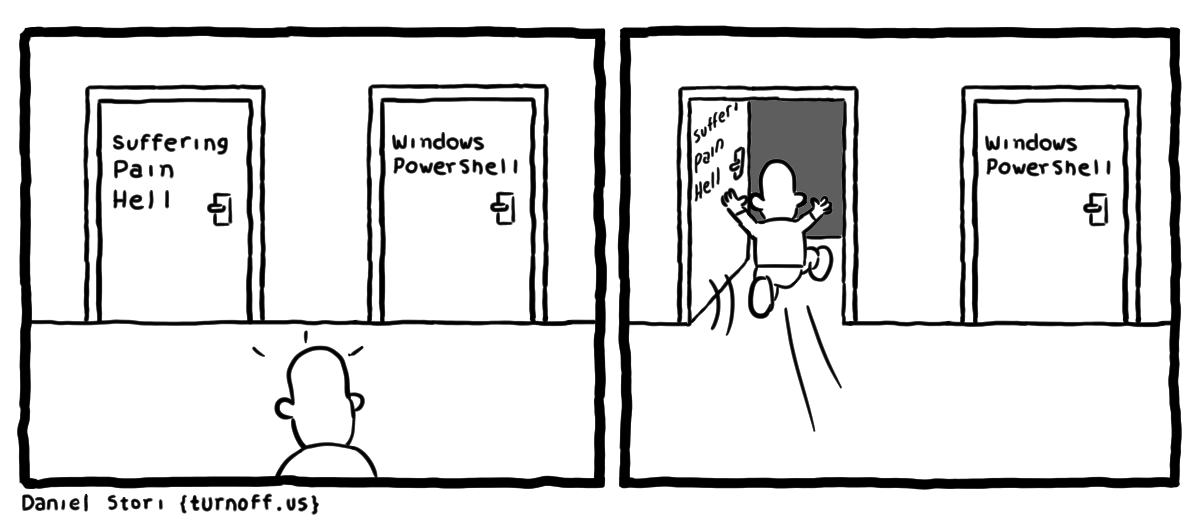PowerShell Complexity (2019)

PowerShell Complexity from DOTNET Object System
PowerShell is based on DOTNET Object system.
〔see PowerShell: Object Type, Properties, Methods〕
This is a big source of its complexity, because, since each value is an object, it means they have methods.
So, computation are done by method call syntax obj.met().
But this make it very inconsistent with many shell syntax and way of operations.
For example, a string, can be split to a array in the following ways
- by method
"a.b".split(".") - by an operator
"a.b" -split "\."
For example, here's how to create a ordered hashtable.
$dict = [ordered] @{"a" = 1; "b" = 1; }
The [ordered] there, is not a dotnet syntax proper, nor typical PowerShell.
It is a PowerShell added syntax.
For example, here's how to create a array of int.
$myar = [int[]]::new(3)
There is no other way except this. It involves, dotnet type, casting, and dotnet static method.
So, you have a bewildering complexity of syntax, and burden on user about which one is the correct choice.
PowerShell Complexity

Been coding powershell kinda semi seriously for a year now. I'd say, it's fairly complex. Far more so than golang, python.
It's complex for 2 major reasons, i think. One is that, the whole thing work on objects, each is object a DOTNET object hierarchy. As opposed to unix just strings.
- So, everything is a object, has methods, and properties.
- But more than that.
- The object that powershell deals with, is more complex than java or python's OOP object.
- Because the object in PowerShell has lots types, very elaborate.
- Not just methods and properties.
- e.g. a special type of property or such called
noteproperties.
- Then, each value, also have very elaborate types.
- Not just primitive types like int float string.
- But u got file object, object for dir, object for enum types, object to represent type, type for special things...
- Perhaps hundreds of types.
- Then, you also have collection type, which include hash table, dictionary, array, array list, etc.
- When u deal with objects in a shell lang used in terminal, u immediately got the issue of display presentation.
- So that adds a layer of complexity.
- Text output are not really text.
- They are object that got converted to text for display purposes in some automated way.
- The detail of this, is complexity.
- But powershell, is also fully backed by dotnet.
- As far as i know , u can call every dotnet method, and every value is a dotnet value type, meaning, u have the complete access to dotnet methods of that value/object.
- This makes pwsh a full bloat with power, that i think may even surpass python.
- This also means that, there are many ways to do the same thing.
- U can actually almost just call dotnet functions as the main way u code pwsh, and or, for every value, u can use dotnet methods, but u can also use powershell cmdlets.
- And, another major reason of complexity is that, pwsh is a shell lang, meaning, it has a linearized syntax to let u type things and work things interactively.
- That is, reduce nesting in syntax, or many ways to omit brackets or params.
- This, linearization of syntax, necessarily made the syntax very complex, with many variations.
PowerShell cannot do many Windows UI things
- PowerShell is disappointing.
- every time u need to do something, such as eject disk, or clear Windows clipboard history, it is nearly impossible.
- this grok answer, no work.
- how to clear Microsoft Windows clipboard history with powershell
- https://x.com/i/grok/share/9EJ8GQnEXawAvnoYM3zMz1UJc